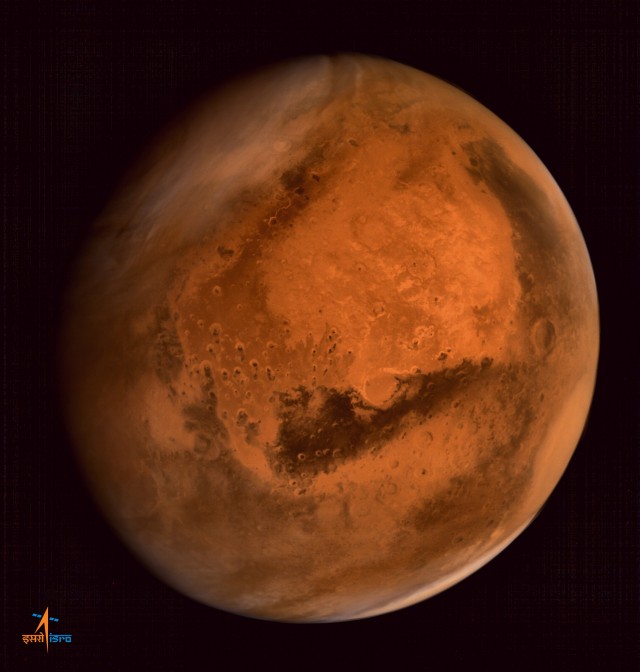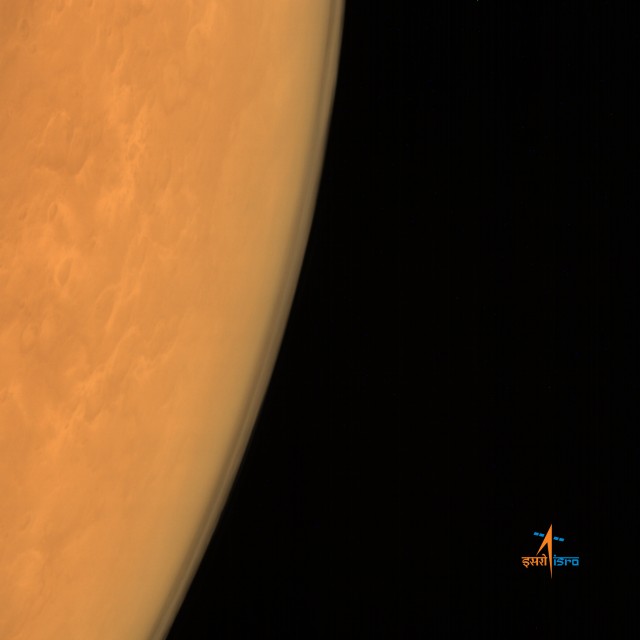Images come down as MAVEN and MOM get to work on Mars
Ars Technica » Scientific Method 2014-09-29
Mars has two new satellites thanks to last week's successful orbital insertions of NASA's Mars Atmosphere and Volatile Evolution (MAVEN) and the Indian Space Research Organization's Mars Orbiter Mission (MOM). Both probes have already returned their first images from orbit. MOM is responsible for the one shown above, which captures a large dust storm in the northern hemisphere of Mars. It also snapped this oblique view of the planet's surface, which manages to capture the thin atmosphere of Mars:
MOM carries a camera that captures visible wavelengths, which is why we're able to enjoy the red planet living up to its name. MAVEN is focused on studying the atmosphere in detail, specifically its interactions with space and the solar wind. Watching what escapes Mars and what stays associated with the planet will tell us a lot about how the Martian atmosphere has evolved over the history of the Solar System.
Unfortunately, that mission won't always result in dramatic photos. The one below shows how MAVEN is able to identify individual gasses and demonstrate how they either associate tightly with Mars (oxygen) or are able to spread out into space (hydrogen). That doesn't mean we won't end up with some great pictures from MAVEN; it's just that the main scientific mission isn't focused on high-resolution images of what Mars looks like.
Read on Ars Technica | Comments

